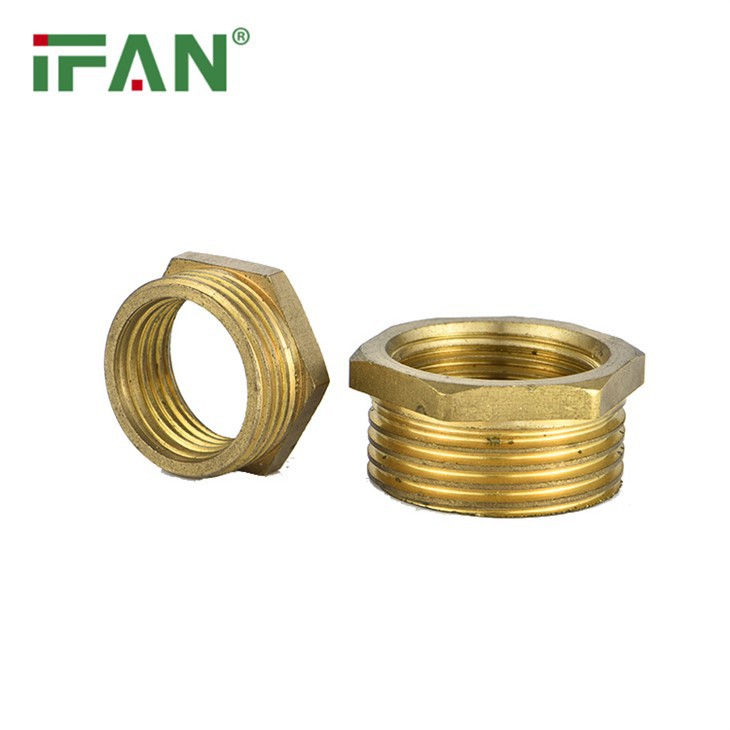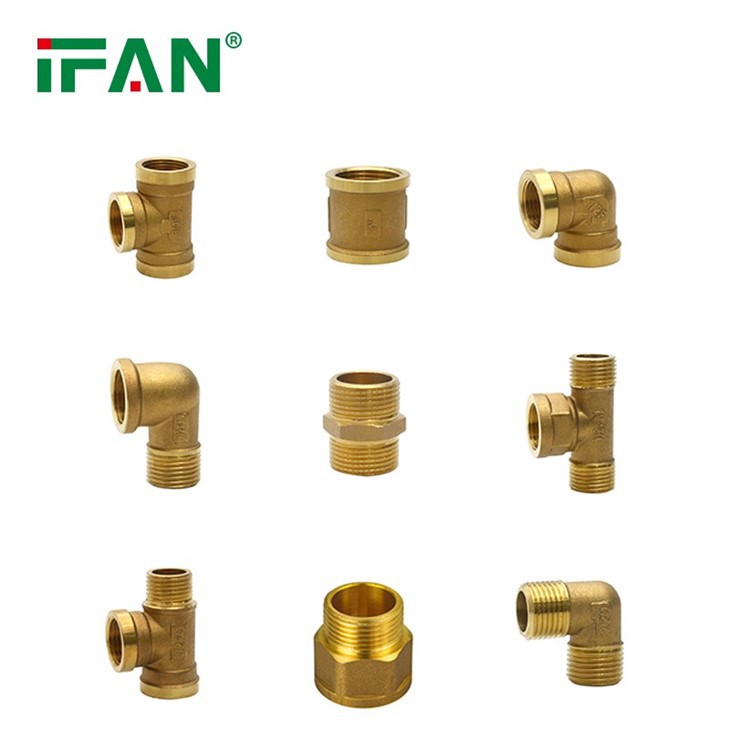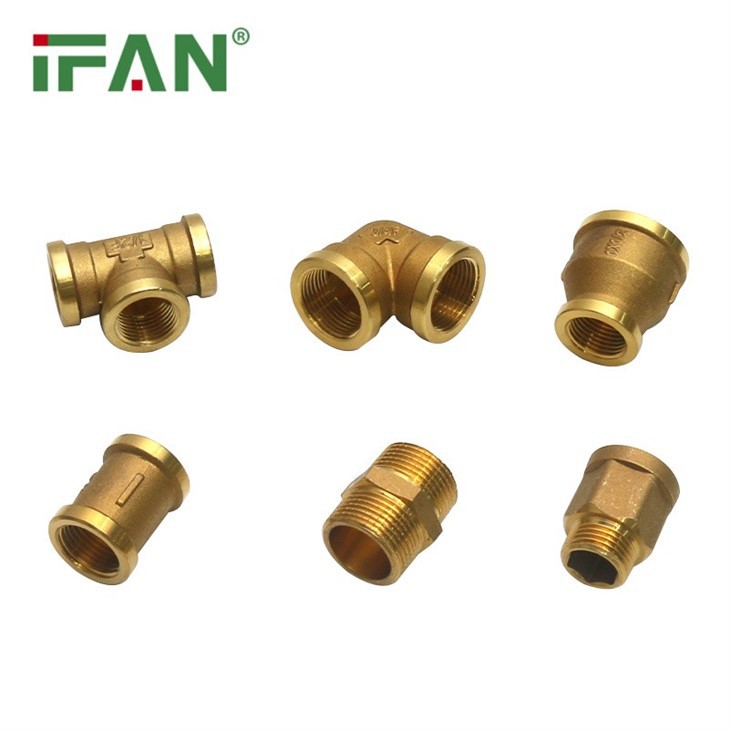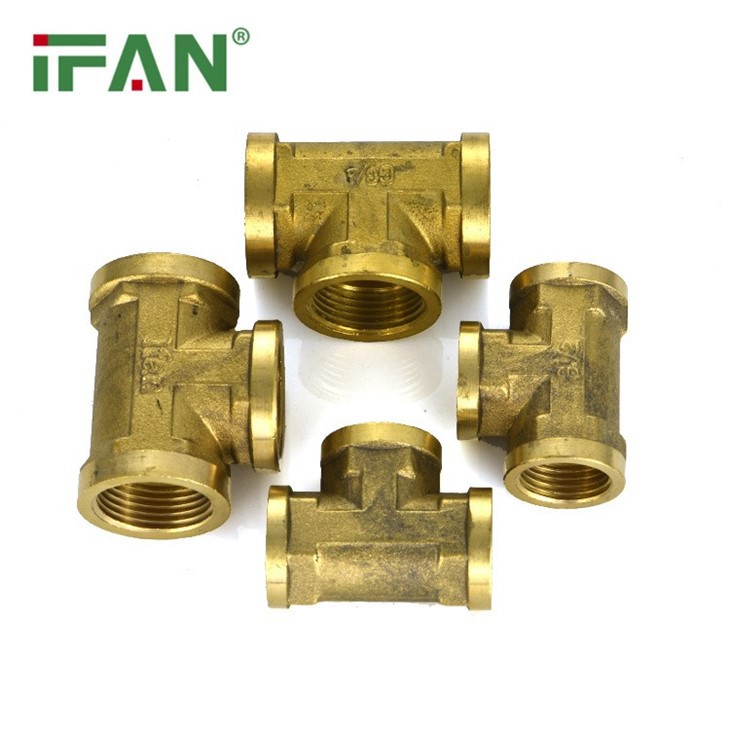BS EN ISO 15875 Full Type PEX Brass Fitting
Material:Brass
Color:Yellow
Size: Customized
Brand:IFAN
Sample: Free
IFAN factory 30+ years manufacture experience support color /size customization support free sample.Welcome to consult for catalog and free samples.This is our Facebook Website:www.facebook.com,Click to watch IFAN's product video.Compared with Tomex products, our IFAN products from quality to price are your best choice, welcome to buy!
Introduction to Forged vs. Cast Brass Fittings
When selecting brass fittings for a project, one important consideration is whether to use forged or cast brass fittings. Both types of fittings have their own advantages and disadvantages, which can impact their suitability for different applications. This article explores the key differences between forged and cast brass fittings, focusing on their manufacturing processes, performance characteristics, and best-use scenarios.
Manufacturing Processes: Forged vs. Cast
Forged Brass Fittings:
Forged brass fittings are created through a process of shaping heated brass material using high-pressure mechanical force. This method involves placing the brass into a die and applying significant pressure to shape it into the desired form. The forging process aligns the grain structure of the brass, resulting in a stronger, more durable fitting. Forged brass fittings typically exhibit higher tensile strength and improved resistance to impact and fatigue compared to cast fittings.
Cast Brass Fittings:
In contrast, cast brass fittings are produced by pouring molten brass into molds to form the desired shape. The casting process involves heating the brass until it melts and then pouring it into a mold where it solidifies. Cast fittings can be produced in complex shapes and sizes with relatively lower production costs. However, the casting process can introduce internal defects and inconsistencies, which may affect the overall quality and performance of the fittings.
Performance and Strength

Forged Brass Fittings:
Forged brass fittings generally offer superior strength and durability due to the manufacturing process. The alignment of the brass grains during forging results in a denser and more uniform material structure, which enhances the fitting's ability to withstand high pressures and harsh conditions. These fittings are less likely to experience cracking or failure under stress, making them ideal for high-pressure applications and environments subject to mechanical stress.
Cast Brass Fittings:
While cast brass fittings are often less expensive to produce, they may not match the strength and durability of forged fittings. The casting process can introduce imperfections such as air bubbles or inclusions within the fitting, which can weaken the material and reduce its performance. Cast fittings may be more suitable for low to moderate pressure applications where the risk of failure is minimal, or where cost considerations are a priority.
Cost and Economic Considerations
Forged Brass Fittings:
The production of forged brass fittings typically involves higher costs due to the need for specialized equipment and processes. The forging process also requires higher-quality raw materials and more energy, which contributes to the overall expense. However, the increased durability and performance of forged fittings can result in lower long-term maintenance and replacement costs, making them a cost-effective choice for demanding applications.
Cast Brass Fittings:
Cast brass fittings usually come with a lower price tag because the casting process is less complex and requires less specialized equipment. The ability to produce fittings in large quantities and the lower cost of raw materials contribute to the affordability of cast fittings. For projects with budget constraints or those requiring large volumes of fittings, cast brass options may provide a more economical solution, though it is important to weigh this against the potential for reduced performance.

Applications and Suitability
Forged Brass Fittings:
Due to their superior strength and durability, forged brass fittings are often used in high-pressure and high-stress environments. Common applications include hydraulic systems, industrial machinery, and high-pressure gas lines. The reliability and performance of forged fittings make them well-suited for critical applications where safety and durability are paramount. Additionally, forged fittings are preferred in situations where mechanical integrity is crucial and failure could have serious consequences.
Cast Brass Fittings:
Cast brass fittings are commonly used in applications where the demands on strength and durability are less stringent. They are suitable for general-purpose plumbing, low-pressure systems, and decorative applications. The ability to create complex shapes and designs makes cast fittings a versatile option for various installations where cost is a significant factor, and where the risk of high pressure or mechanical stress is minimal.

Conclusion: Making the Right Choice
Choosing between forged and cast brass fittings requires careful consideration of the specific requirements of your project. Forged brass fittings offer enhanced strength, durability, and performance, making them ideal for high-pressure and high-stress applications. However, they come with a higher cost. Cast brass fittings, while more affordable, may not offer the same level of performance and can be more prone to defects, making them better suited for lower-pressure and less demanding applications. By understanding the differences and evaluating the needs of your project, you can make an informed decision that balances performance, cost, and application suitability.
Hot Tags: bs en iso 15875 full type pex brass fitting, China, suppliers, manufacturers, factory, wholesale, cheap, discount, low price, in stock, free sample, PPR Fitting Tee, PPR Fitting Female Socket, Bidet Sprayer, Glass Fiber PPR Pipe, Compression Equal Socket, Floor Heating PEX Pipe
Send Inquiry




